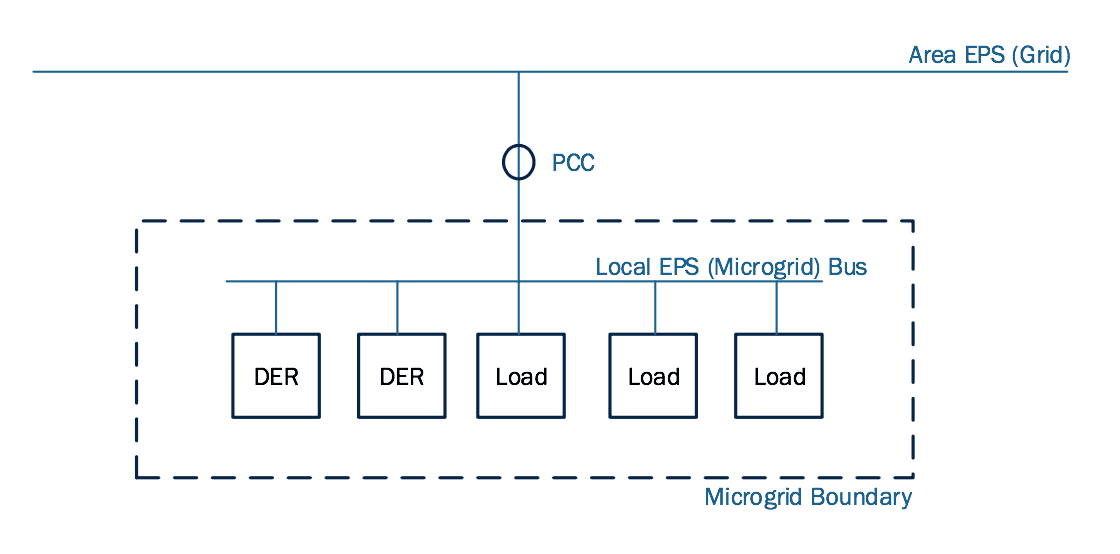Microgrids essentially consist of a collection of Distributed Energy Resources (DERs). When the buses that connect these DERs and loads are separated from the grid they form a local Energy Power System (EPS). When the local EPS connects to the grid, also known as the Area EPS it is done so through a point of common coupling (PCC) as shown in the diagram. The PCC is usually a breaker, relay and/or inverter which is controlled to synchronize the microgrid and its DERs to the EPS (grid) before a connection is made. Synchronization involves matching the voltage, frequency and phase angle of the 60/50 Hz sinusoidal waveform of the grid to that of the microgrid DERs so that their waveforms align at the time that the connection is closed between the two grids.
Synchronization is required to prevent large power surges should the two power systems be out of phase. Other control functions include changing the protective relay settings to prevent unintended electrical separation or islanding and back feeding the grid should the grid have an outage without the microgrid properly transitioning back to island mode.

Different control functions are needed for transitioning into island mode where the microgrid is separated from the grid. Typically, in the grid connected mode, the DERs operate in a frequency control mode where the frequency is held constant, but voltage is allowed small changes as loads fluctuate. In island mode, DERs typically operate in droop control, where the frequency is allowed small changes and the voltage is held constant as loads fluctuate. In the case of multiple DERs, one DER syncs to the grid, and the other DERs follow its lead. Since the output of the DERs need to match the load, fast load shedding schemes are used to keep the microgrid operating without large imbalances which can cause the protective relays to disconnect DERs to protect them from power surges.
This complex process is achieved with multifunctional breakers and microgrid master controllers that can easily handle these coordinating actions. These functions are also built into some inverters. Seamless transfer between grid connected and island mode is the most desirable form of transition between modes but not always needed nor cost effective depending on the requirements of the microgrid. Some control methods may have power interruptions that are less than a few milliseconds, while other less sophisticated methods may require that all loads be dropped until the DERs and protective relays can be restarted in the correct mode.
Another important consideration is black start which allows the microgrid to restart itself should the DERs themselves experience an outage or not operating at the time of an outage.
For more Microgrid information or a consultation contact:
Wunderlich-Malec’s experienced engineering team can help customers determine the best microgrid and mode transfer design to meet their needs. Contact John Kelly from the mGrid™ team to discuss your microgrid needs at john.kelly@wmeng.com.
